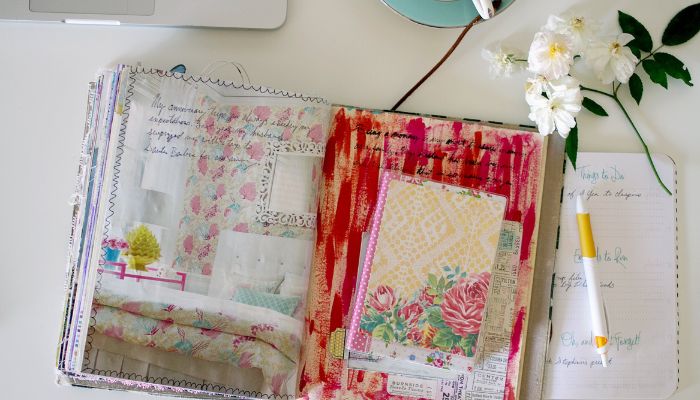


In our regular waking lives, we don’t usually remember every single dream that we had. For some of us, we may had a dream that we want to remember forever. It could be about some cute rabbits that we never had. The only way that we can make these memories timeless is to start a dream journal.
While there are a lot of views on dreams and whether we can truly learn anything from them, one of the most widely accepted beliefs is that it is a reflection of waking life.
A dream journal is deeply personal and unique to the person who keeps it. Keeping a dream journal can let you comprehend yourself much better, much like many other introspective practices you may have incorporated into your day.
Additionally, it can be a gratifying experience that might amuse you.
In fact, some people treat dream journals as a way to jumpstart creative exercises such as painting, storytelling and much more.
You can give yourself the gift of understanding by recording your dreams in a dream journal. The chance to think about and perhaps research your aspirations. You never know; they might tell you things you didn’t expect.
Besdies, keeping a dream journal helps you to consciously remember dreams. It is also a helpful tool in improving dream recall.

Dreams are mysterious, wonderful, and full of wisdom and creativity. Unfortunately, less than 10% of dreams are remembered by most people. However, there is a straightforward technique you can do to assist you in remembering your dreams: record them in a dream journal. It could appear to be an impossible task. How do you put what you can’t remember in writing?
The most important factors are your desire and readiness to incorporate dream recall and journaling into your morning routine on a daily basis. Remembering and understanding your ideal existence can be accomplished with as little as five minutes every day. As time passes, you can start to interpret your dreams, particularly if you frequently have similar experiences. Here’s how you can keep a dream journal.
Get a real notepad or diary for yourself as a beginning step. Your choice here depends on your particular preferences and sense of style. You’re good to go as long as you can write clearly in it and, ideally, draw pictures and diagrams as well. There are some pre-made dream journals available, but they are not required, and in many ways, making your own is far more enjoyable and creative. For you to appreciate this practice, Shuteye has some fantastic self-care printables and journal templates. You can choose our Dream Journal and Printable Sleep Tracker to keep a check on your dreams every day.
Fast and immediate documentation of dreams is essential. So, pick your dream journal as soon as you wake up. It’s a common sensation when you try to explain a dream to someone else, and the logic starts to fall apart: Keep a pen and your dream journal handy. That way, whether you wake up in the middle of the night or the next morning, you can write down all you remember.
The greatest time to write in your dream notebook is when you first awake, so keep it by your bedside. Make sure you can easily access your dream notebook because if you have to dig around for anything to write on, you can forget your dream in the interim.

Maintaining your dream journal is important so that you can always keep things in order. To do this, after completing an entry, enter the date for the following one or get yourself a bullet journal. In this manner, you can immediately begin writing the dream and avoid wasting time thinking about the date when you first wake up. Others like to write the date the night before as a sort of ritual preparation. Some dream journal writers choose to write the next day’s date after the journal entry for that morning is finished.
It’s imperative to gather the points the way they come into your mind. As you are writing down the details of your dream, avoid attempting to construct a story. Just concentrate on writing down all you can remember as rapidly as you can before the specifics of your dream slip your mind.
Later, you can deal with creating a story and interpreting your dream. Some people can find it challenging to write about their dreams, but they find it simpler to portray them visually. If you fall into this category, consider painting what you see in your dream rather than attempting to explain it verbally.
Long-term dream journaling can show patterns through recurring dreams or the frequent occurrence of significant aspects in your waking life. It can also provide you with insights of how your subconscious mind works.
As your mind grows more comfortable with these patterns, it may start to be more conscious of how to use them while you’re asleep.

For more related content:
Common Dream Meanings and What They Mean
Dreams are enigmatic experiences. Humans have long studied dreams and what they imply, whether they are good or unpleasant, memory tricks or irrational fantasies. Today, psychologists, biologists, artists, and even mathematics all use dreams in their research! How important are dreams to you? If you start keeping a dream journal, you might be able to determine that.

